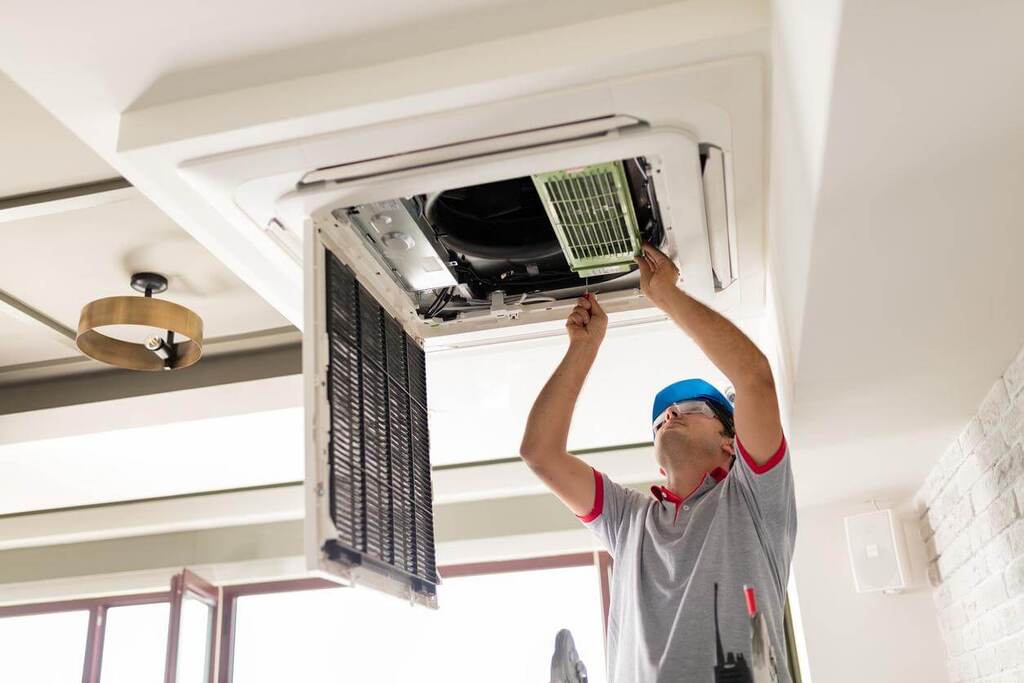Sustainability in home design is more than a passing fad; it’s quickly becoming an expectation. Incorporating sustainable features into your home increases its appeal and value to potential buyers and provides utility cost savings that contribute to a great ROI. Your home’s HVAC system offers the greatest potential for adding enduring, sustainable features. Here are six practical ways to make your HVAC more sustainable; while cutting your energy costs and carbon footprint at the same time.
Schedule Annual Tune-Ups and Maintenance Appointments
Whether you’re in a new build or an older home, AC and furnace tune ups are important to make your HVAC more sustainable. Ideally, you’ll have an annual tune-up for both your air conditioning and heating systems, with your ventilation check rolled into the latter.
Schedule your heating check-up for the late summer or early fall, so you’ll have plenty of time to schedule a furnace repair before the cold season hits. Conversely, schedule your air conditioning appointment for the late winter and early spring to ensure it’s ready for the first stretch of hot days.
An annual tune-up and maintenance appointment will ensure your HVAC is running as efficiently as possible. When these systems run inefficiently, they consume more energy to do less work. Thus, scheduling an annual appointment will minimize your power bill and energy consumption.
Clean and Change Filters Monthly

HVAC filters do the vital job of improving air quality and keeping your family happy and healthy. While it’s natural for these filters to acquire dirt and dust, the build-up causes the system to work less efficiently. As a result, your air quality will be impacted, and your system will work harder, resulting in more maintenance requirements and energy consumption.
Keep your systems running smoothly by changing or cleaning your HVAC filters monthly or bi-monthly. It’s important to understand whether your furnace and air conditioner have disposable or permanent filters. Fortunately, your HVAC technician can tell you this information during your maintenance appointment.
If possible, consider using a permanent, reusable filter and cleaning it to minimize waste and make your system even more eco-friendly.
Use a Smart Thermostat
Smart thermostats are an evolution of programmable thermostats. These devices not only allow you to schedule your home heating and cooling, but they also provide valuable insights into consumer habits and allow remote adjustments.
A smart thermostat will learn about your heating and cooling habits and make adjustments based on whether people are present or not. A recent study showed that 89% of respondents failed to use evening and weekend schedules on their programmable thermostats. With a smart thermostat, the intuitive nature of the device thinks for you and steps in when you forget to make a change.
Adjust the Temperature
It’s surprising the difference a few degrees can make on energy consumption and HVAC-associated costs. Adjusting your thermostat to be a couple of degrees cooler in the winter and warmer in the summer will limit how often your HVAC system kicks in.
Consider setting sustainability and consumption rules within your household before adjusting the temperature. For example, encourage using cooling packs in the summer before turning the air conditioning on full blast. Conversely, ensure everyone has on socks and a sweater before considering a heat adjustment.
Find and Seal Leaks and Drafts
Drafts and leaks are a subtle yet powerful drain on your HVAC system. If you have drafty doors and windows, a poorly insulated attic or outlets, and leaky HVAC tubing, you’re burning money.
Take the time to scour your home for potential leaks and drafts. You can find these by using a candle to detect wind or rent a draft detection device. Enhance your effectiveness by using a sustainable duct wrap to insulate your HVAC systems.
Consider Ice-Powered AC

Ice-powered air conditioning is a relatively new innovation that’s in the initial phases of consumer adoption. While there’s still room for improvement, this invention is an impressive step in the right direction for sustainable home cooling.
These air conditioning units work similarly to the ice maker in your refrigerator. The system freezes a large block of ice overnight, then uses the ice to provide cool air for the day. After the six to eight-hour usage window expires, you’ll need to “recharge” the device by allowing the ice to freeze again overnight.
Conclusion
This device works with a traditional air conditioning unit, so you won’t be relegated to suffering in the heat while the ice block refreezes. However, you will benefit from less energy consumption and lower cooling costs throughout the day.
With these six strategies and tools, you can make your HVAC system more sustainable and eco-friendly.
Discover More:-

